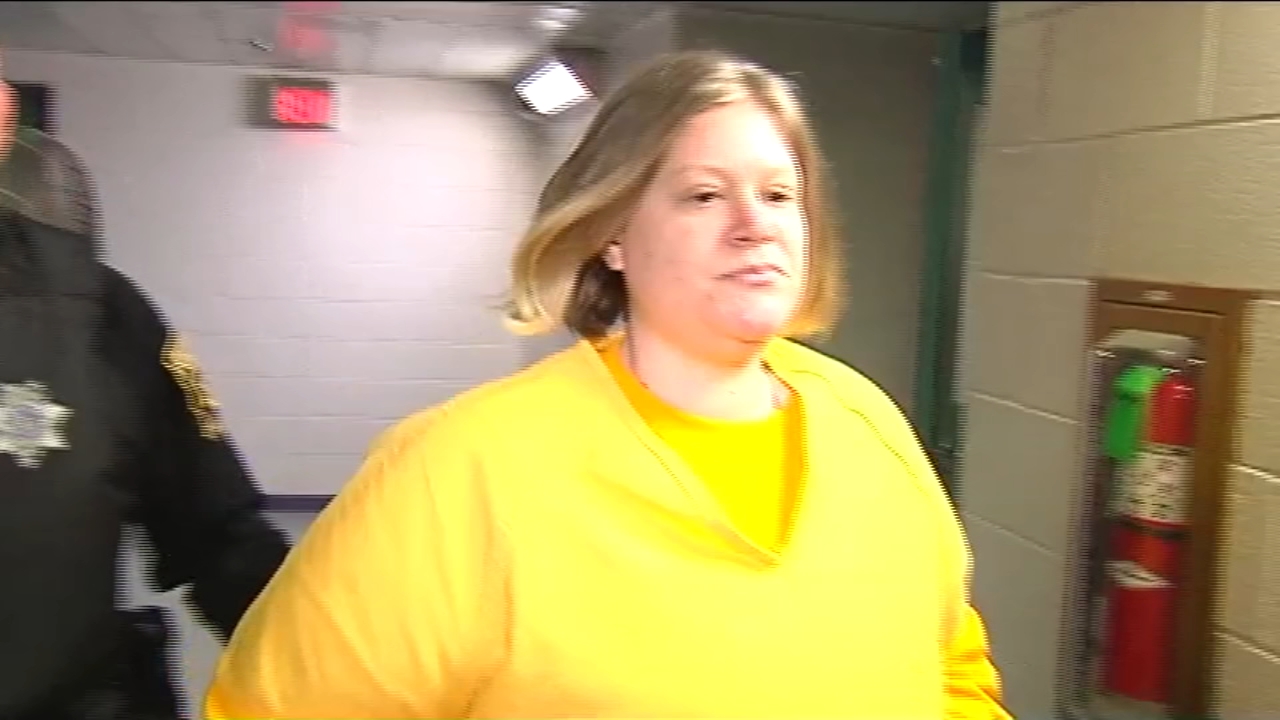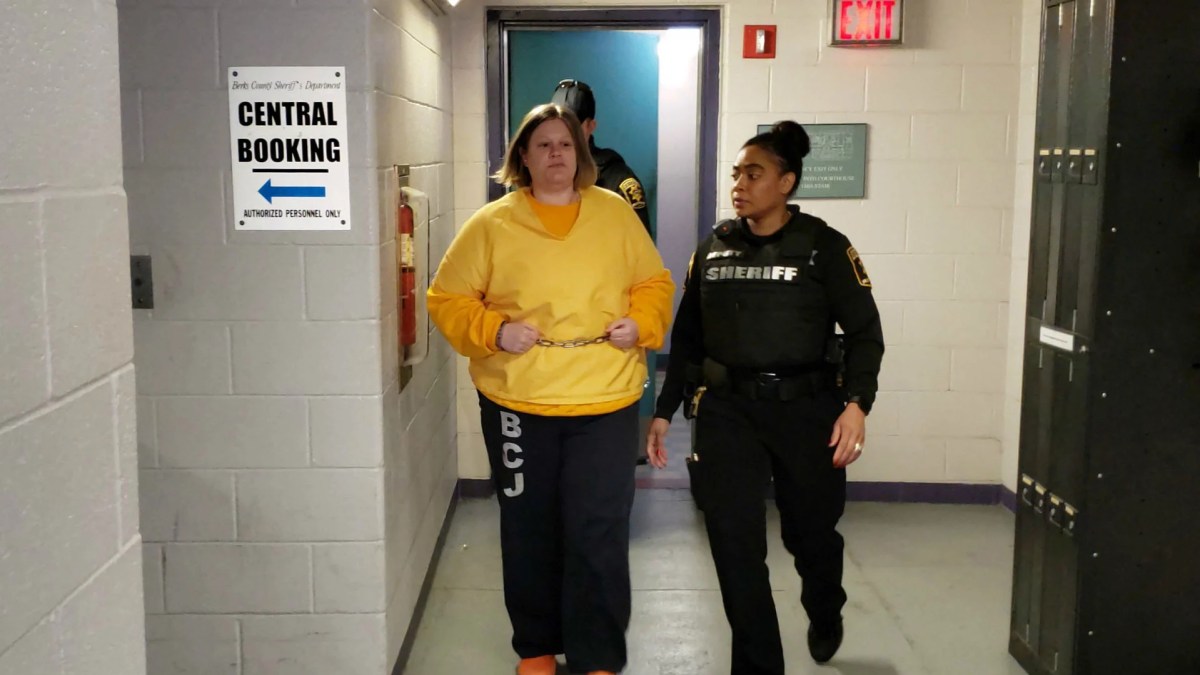Defense starts laying out case in Lisa Snyder murder trial: ‘All you have is conjecture’ – the words echo in the courtroom as Lisa Snyder faces charges for the deaths of her two young children. The prosecution has presented a compelling case, highlighting evidence that points to Snyder as the culprit.
However, the defense argues that the prosecution’s case relies heavily on speculation and lacks direct evidence linking Snyder to the deaths.
The case revolves around the tragic deaths of Snyder’s two children, who were found dead in their home. The prosecution alleges that Snyder intentionally killed her children, while the defense maintains that there is no proof of her involvement. The trial has become a battle of interpretation, with both sides presenting their own narratives based on the available evidence.
The Case Overview

The Lisa Snyder murder trial is a high-profile case that has captivated the nation. Lisa Snyder is accused of killing her two young children, 8-year-old Kevin Snyder Jr. and 4-year-old Cora Snyder, in 2019. The prosecution alleges that Snyder strangled her children to death and then staged the scene to look like a suicide.
The defense argues that the prosecution’s case relies on speculation and conjecture, and that there is no evidence to support the charges against Snyder.
Evidence Presented by the Prosecution
The prosecution has presented a significant amount of evidence in the case, including physical evidence, witness testimonies, and expert opinions. The prosecution’s case hinges on the theory that Snyder intentionally killed her children.
- Physical Evidence:The prosecution has presented physical evidence, such as the rope used to hang Kevin Snyder Jr., which was found to be consistent with the rope used to hang Cora Snyder. They also presented evidence of a search history on Snyder’s computer, which included searches for “how to hang someone.” However, the defense argues that this evidence is circumstantial and does not prove that Snyder killed her children.
- Witness Testimony:The prosecution has called several witnesses to testify, including Snyder’s former boyfriend and her neighbors. These witnesses have provided testimony about Snyder’s behavior leading up to the deaths of her children. For example, Snyder’s former boyfriend testified that Snyder had told him that she was feeling overwhelmed by her children and that she was considering giving them up for adoption.
The defense argues that this testimony is unreliable and that the witnesses are biased against Snyder.
- Expert Opinions:The prosecution has presented expert testimony from medical examiners and forensic scientists. The medical examiners testified that the cause of death for both children was hanging. The forensic scientists testified that the evidence found at the scene of the crime was consistent with a staged suicide.
The defense argues that the expert testimony is flawed and that the experts are relying on assumptions rather than facts.
Defense’s Initial Strategy
The defense has argued that the prosecution’s case is based on speculation and conjecture. They argue that there is no evidence to support the charges against Snyder. The defense’s initial strategy is to attack the prosecution’s evidence and to present an alternative explanation for the deaths of the children.
They are focusing on the possibility that the children’s deaths were accidental. The defense has argued that the rope used to hang Kevin Snyder Jr. was not secured properly, and that he may have accidentally hanged himself while playing.
They also argue that Cora Snyder may have accidentally hanged herself while trying to reach a toy.
The Defense’s Argument
The defense in the Lisa Snyder murder trial is expected to argue that there is no direct evidence linking Snyder to the deaths of her children. They will likely focus on challenging the prosecution’s case by questioning the reliability of witnesses and the validity of expert opinions.
Challenging the Prosecution’s Evidence
The defense will likely argue that the prosecution’s case relies heavily on circumstantial evidence and that there is no direct evidence linking Snyder to the deaths of her children. They may point out inconsistencies in witness testimony or question the methodology used by experts in reaching their conclusions.
- The defense might argue that the prosecution’s reliance on expert testimony is flawed, claiming that the experts may have misinterpreted the evidence or used unreliable methods to reach their conclusions.
- They might also argue that the prosecution’s witnesses are not credible, citing inconsistencies in their testimony or suggesting that they have a motive to lie.
Alternative Explanations for the Children’s Deaths, Defense starts laying out case in Lisa Snyder murder trial: ‘All you have is conjecture’
The defense may present alternative explanations for the children’s deaths that do not involve Lisa Snyder’s direct involvement.
- They might argue that the children’s deaths were accidental, possibly due to a malfunctioning piece of equipment or a lack of supervision.
- The defense could also suggest that the children were victims of a crime committed by someone else, pointing to evidence that may have been overlooked by the prosecution.
The Role of Evidence: Defense Starts Laying Out Case In Lisa Snyder Murder Trial: ‘All You Have Is Conjecture’
The physical evidence presented in the Lisa Snyder murder trial is a crucial component of the case, as it provides tangible clues that can either support or refute the prosecution’s allegations. The interpretation of this evidence is where the prosecution and defense diverge, offering contrasting perspectives on the events that led to the death of Snyder’s daughter, .
The significance of the evidence lies in its ability to establish or challenge the key elements of the prosecution’s case, such as the cause of death, the presence of intent, and the potential involvement of Snyder.
The Significance of the Physical Evidence
The physical evidence presented in the trial is a collection of objects, materials, and traces found at the scene of the crime, on the victim’s body, or in Snyder’s possession. This evidence includes the ligature used to strangle the victim, the victim’s body, the crime scene itself, and any potential traces of DNA or other substances.
When investigating detailed guidance, check out Wordle hints today for #1,190: Clues and answer for Saturday, September 21 now.
Each piece of evidence carries its own significance, offering insights into the circumstances surrounding the victim’s death. For example, the ligature used to strangle the victim could provide crucial information about the method of death and the perpetrator’s potential strength and capabilities.
Similarly, any traces of DNA found at the scene or on the victim’s body could link Snyder to the crime.
The Impact of the Trial

The Lisa Snyder murder trial is not just a legal proceeding; it is a story that has gripped a community and impacted the lives of multiple families. The trial’s outcome will have far-reaching consequences, influencing not only the fate of the defendant but also the emotional well-being of those involved.The trial’s impact on the community can be seen in the heightened awareness of child abuse and the emotional toll it takes on families.
The trial has sparked discussions about the complexities of grief and loss, particularly in cases where children are involved. It has also raised questions about the role of law enforcement and the justice system in investigating and prosecuting such cases.
The Burden of Proof and Presumption of Innocence
The trial highlights the fundamental legal principle of the presumption of innocence, which states that a defendant is presumed innocent until proven guilty beyond a reasonable doubt. This principle is crucial in ensuring that the accused receives a fair trial and that the prosecution bears the burden of proving guilt.
The trial also emphasizes the importance of evidence and its role in determining guilt or innocence.
“The prosecution must prove beyond a reasonable doubt that the defendant is guilty. The defendant is not required to prove their innocence.”
The legal and ethical implications of the trial are significant. The prosecution must present compelling evidence to convince the jury of the defendant’s guilt, while the defense must present evidence to raise reasonable doubt about the prosecution’s case. The jury’s verdict will determine the defendant’s fate and have lasting implications for all parties involved.
Societal Concerns and Controversies
The Lisa Snyder murder trial has also brought to light societal concerns about the challenges of prosecuting cases involving child deaths. Such cases often involve complex emotional and legal issues, making it difficult to determine the true circumstances surrounding the child’s death.The trial has sparked discussions about the following:
- The difficulties of investigating and prosecuting cases involving child deaths, particularly when there is no clear evidence of abuse or neglect.
- The emotional toll that such cases take on law enforcement, social workers, and other professionals involved.
- The challenges of balancing the rights of the accused with the need to protect children.
The trial’s impact on the families involved is profound. The families of the deceased children are grappling with unimaginable grief and loss. The defendant’s family is also facing a difficult situation, navigating the legal process and dealing with the public scrutiny that comes with such a high-profile case.The Lisa Snyder murder trial is a reminder of the complexities of the justice system and the profound impact that legal proceedings can have on individuals, families, and communities.
It is a case that will continue to be discussed and debated for years to come, raising important questions about the role of law enforcement, the burden of proof, and the presumption of innocence.
Closing Notes
The Lisa Snyder murder trial is a complex and emotionally charged case. The defense’s strategy hinges on challenging the prosecution’s evidence and presenting alternative explanations for the children’s deaths. The outcome of the trial will ultimately depend on the jury’s assessment of the evidence and their interpretation of the events leading to the children’s deaths.
The case raises important questions about the burden of proof, the presumption of innocence, and the challenges of prosecuting cases involving child deaths.
User Queries
What are the charges against Lisa Snyder?
Lisa Snyder is facing charges related to the deaths of her two children. The specific charges may vary depending on the jurisdiction and the evidence presented.
What is the defense’s main argument?
The defense argues that the prosecution’s case relies on speculation and conjecture, and that there is no direct evidence linking Snyder to the deaths of her children.
What is the potential impact of the trial?
The trial could have a significant impact on the community, the families involved, and the legal system. It could raise important questions about the burden of proof, the presumption of innocence, and the challenges of prosecuting cases involving child deaths.
 CentralPoint Latest News
CentralPoint Latest News

